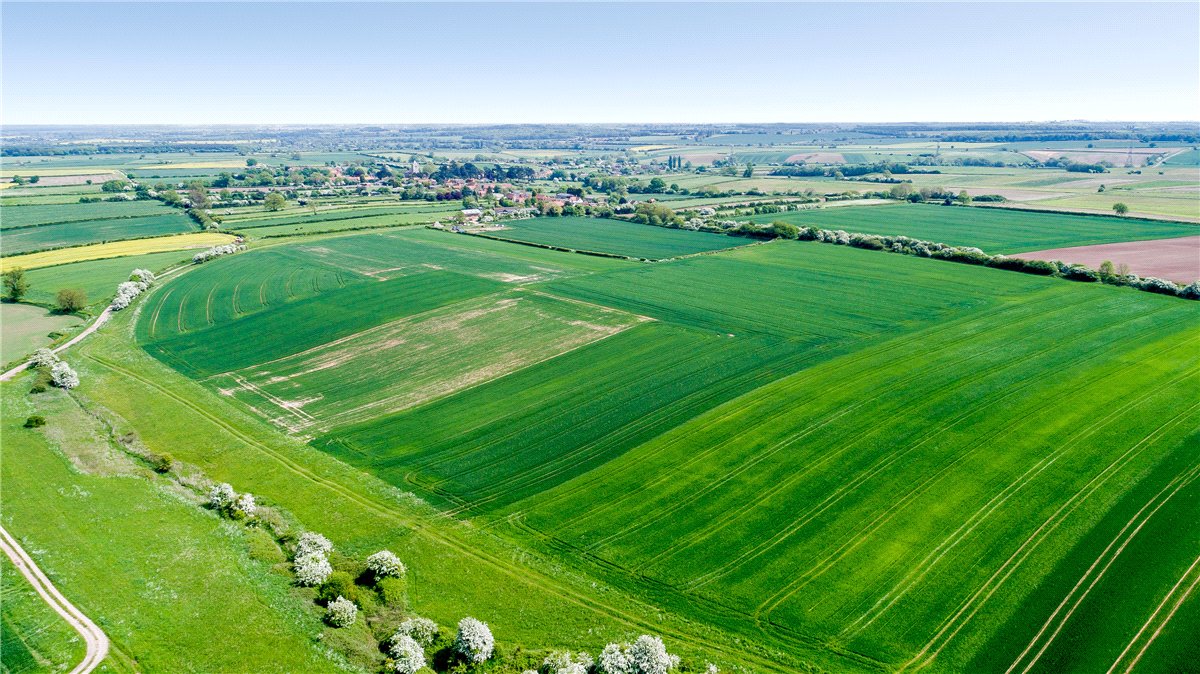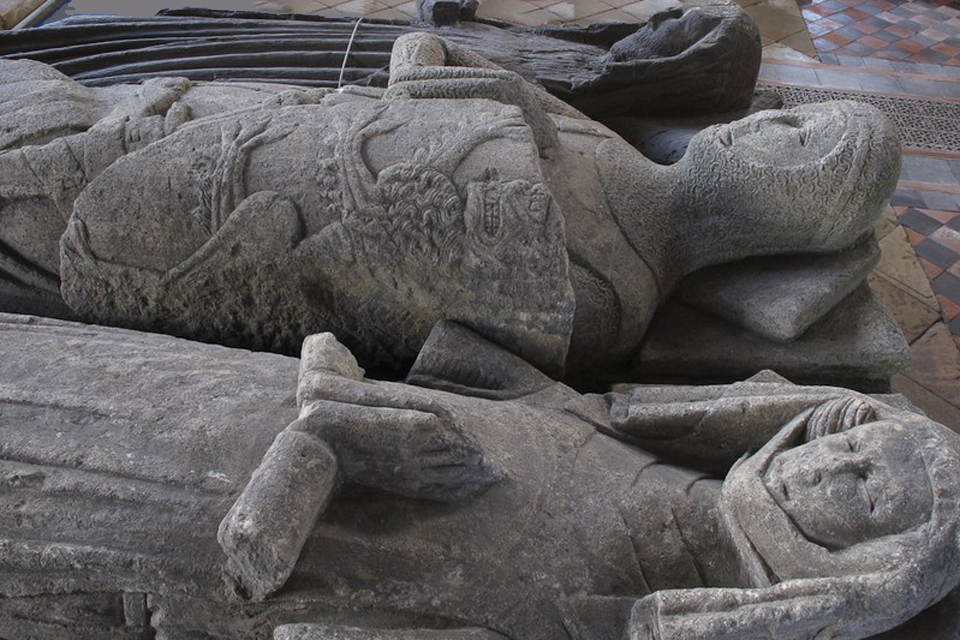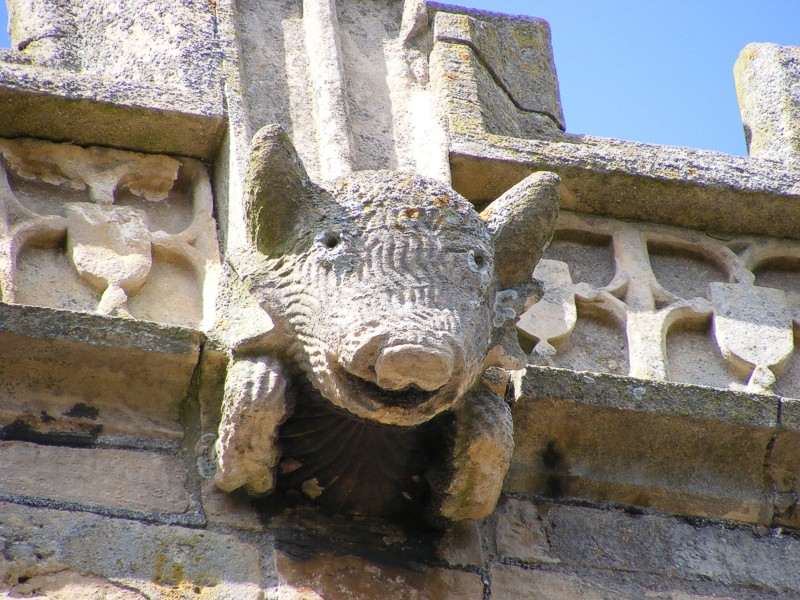Among medieval historians, Laxton in Nottinghamshire is famous. As the last Open Field Village it offers a unique showcase of what England once looked like.

Laxton with its open fields and its heritage is quite unique. Once, England was littered with villages like it, but now only Laxton in Nottinghamshire is the only one remaining feudal estate is up for sale. For £7 mill a new proprietor can become lord of the manor including owner of 17 working farms, ten cottages, the Dovecote Inn and a title. Moreover, he or she can become responsible for the last remaining bit of English countryside still farmed as it has since the 13thcentury.
Laxton is mentioned in Domesday (1086) as home to 35 households including a manor, which in 1066 was held by Toki, son of Auti. With 22 villagers, 7 small holders, five slaves and one female slave, we may presume approximately 125 – 150 people lived in the village farming the land with the help of seven plough teams, one of which belonged to the lord. In 1086, however, Walter had taken over, with a tenant-in-chief Geoffrey Alselin. The latter was responsible for overseeing 21 villages in the triangle between Nottingham, Lincoln, and Chesterfield. Mainly, they had been taken over from Toki. At this time, no parish church is mentioned. Whether or not the settlement constituted a village at this point or rather was composed of dispersed farmsteads is possible, if not probable.
It seems likely, the church was first founded a hundred years later during the reign of Henry I. Later, after 1258, this building was extended by the Everingham family, who also used it for the family burials. The church holds the effigy of Robert Everingham † 1287, who made Laxton his principal home. Effigies may also be seen of Adam de Everingham 1280 – 1336 with his two wives,Clarice and Margery, and his son, Adam de Everingham the Younger, who fought at Cressy and died in 1371.

In the Norman times, the village came to hold a Norman Castle with a small, strongly defended motte and inner bailey covering c. 1.5 ha. To the south was an outer bailey, somewhat larger, and abutting the northern hall lane of the village. The village itself was a typical “row village”, with farms built on long regulated plots to the north and south of the main road, and with the village church and green at the transection of the westerly and southerly roads. It is likely the east row is the earliest part of the village.
This castle was not the caput of the estate of Geoffrey Alselin. However in the 12thcentury, his daughter married Robert de Caux, who was appointed keeper of the Nottingham forest. During his lordship, the castle was constructed to furnish the household of a privileged royal servant. In 1204, a hall is documented. Ten years ago, archaeologists undertook a detailed topographic survey of the castle site and concluded that this hall had probably stood in the outer bailey along with a dovecote, built c. 1213 – 14. The Motte stands c. 10 m high and is surrounded by a ditch. Later a manor house was built in the 16thcentury, turning the medieval castle into a ruin pilfered for building materials. The grounds surrounding the motte were laid out as a garden with fish-ponds.
It is likely, the regulated village dates from the late 12thcentury. On the other hand, the regulation may also herald from the reign of John, into whose royal hands, the castle eventually passed. It has been proposed that Laxton at this time may have played a role as a small town with a market. Witness to its affluence at this time is the £100, which the village men paid to King John to prevent his sheriff to burn down the village. Soon after, in the 1230s, the lords of Lexton lost their status as Keepers of the Royal Forests, and the village fell back into slow degradation.

This continued in the 14thcentury when the lowering of rents indicates the village was severely hit by the Black Death and the following migration into the larger cities. After this, the village slowly froze in time. In 1438, it was passed on the family Ross and remained in their costudy for the next 200 years, until it was acquired by the Earls of Kingston in 1618.
During the next centuries numerous owners kept the place going until 1952, when the 6thearl of Manvers sold Laxton to the government on the condition the open-field system should be maintained. Until then, fragmented ownership had obstructed enclosure.
Today, the village is pretty much farmed in the same way as may be seen in a map from 1635, kept in the Bodleian Library in Oxford. It comprises 1,845 acres, including 525 acres unenclosed open fields. The farming is organised according to the decisions made by the Laxton Court Leet, the ancient manorial court, which meet twice yearly to deal with business.
Laxton is located quite near the Sherwood Forest and barely 7 miles from Edwinstowe, where the man behind the legend of Robin Hood, Robert Godbed, probably originated.
SOURCE
The Laxton Estate
By Carter Jonas
The Crown Estate 2018
SEE MORE
The post Laxton – the Last Medieval village and home of Robin Hood appeared first on Medieval Histories.
Powered by WPeMatico